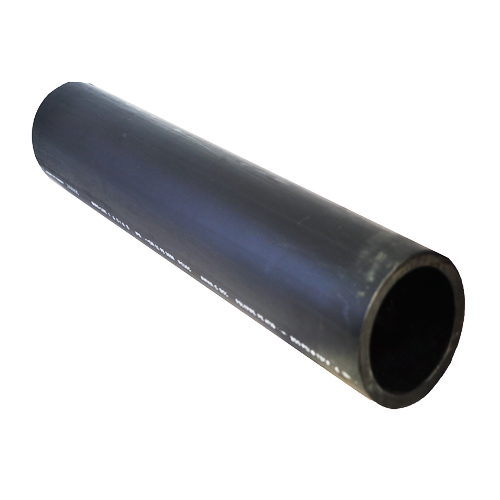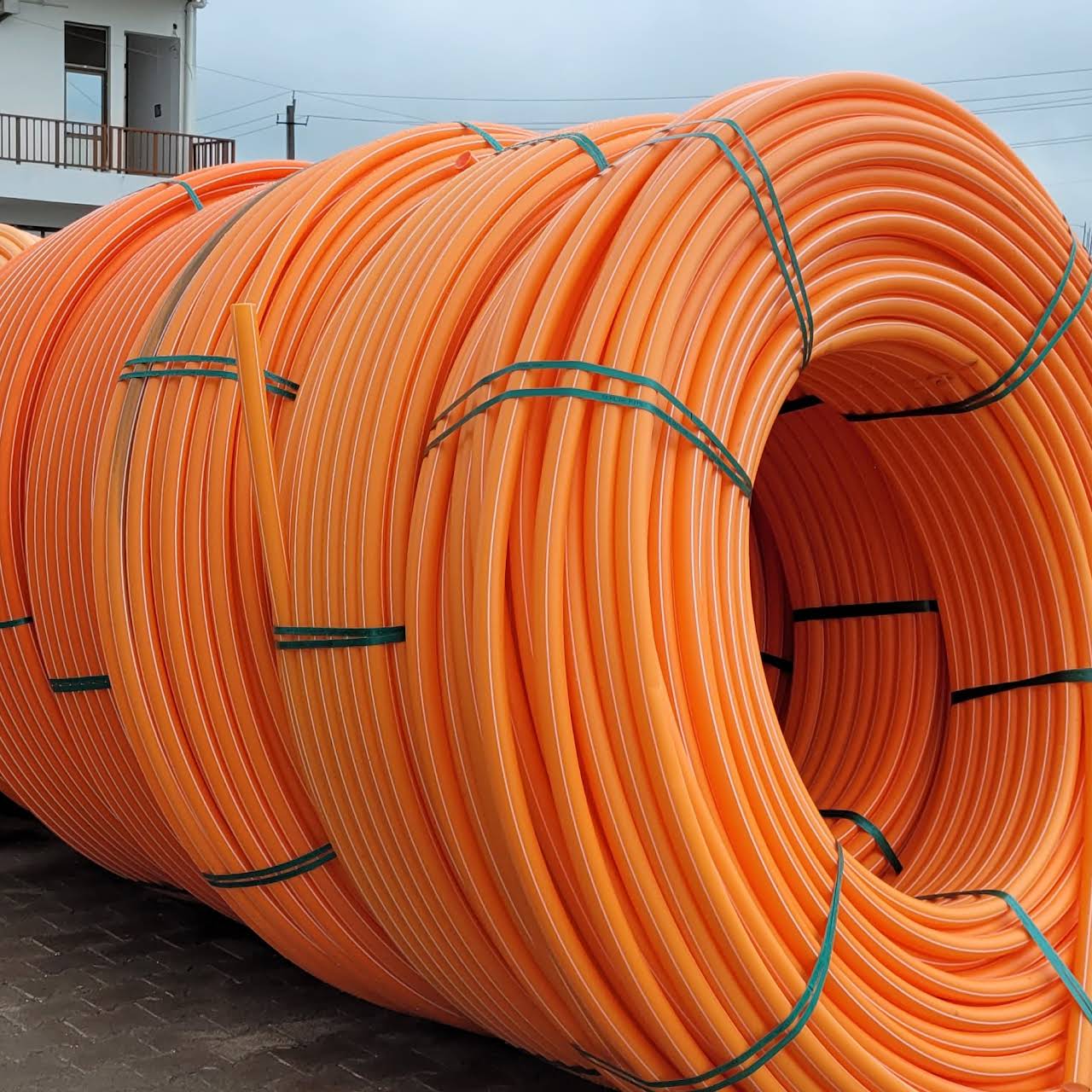Where to Find hdpe pipe in stock Midland TX for Immediate Delivery
Discover the Manufacturing Refine Behind High-Quality HDPE Pipeline and Its Applications
The manufacturing procedure of high-grade HDPE pipelines is intricate and methodical. It starts with the choice of resources that improve efficiency. Following this, ethylene goes through polymerization to create material, which is after that shaped with extrusion. Quality control is vital, guaranteeing that the end product meets rigid requirements. The trip of HDPE pipes does not finish with manufacturing. Their applications throughout various sectors disclose a more comprehensive value worth analyzing.
Comprehending HDPE: Residences and Advantages

High-density polyethylene (HDPE) is a flexible thermoplastic known for its durability and resistance to various ecological factors. This product exhibits excellent tensile toughness, making it suitable for requiring applications. Its low-density structure adds to a light-weight product, assisting in simplicity of managing and setup. HDPE likewise showcases exceptional resistance to chemicals, which decreases degradation when exposed to extreme substances.
The material's reduced wetness absorption further improves its long life, making it perfect for use in pipelines and tank. In addition, HDPE is resistant to ultraviolet (UV) radiation, ensuring that products maintain their honesty even when subjected to sunlight. Additionally, its versatility enables the production of complex shapes without endangering stamina. The green nature of HDPE, often stemmed from recycled materials, contributes to its charm, advertising lasting methods in production. On the whole, these homes and benefits make HDPE a recommended option for various industrial and customer applications.
Resources Selection for HDPE Manufacturing
The choice of raw products for HDPE manufacturing is vital to confirm the last item fulfills the wanted specs and top quality requirements. High-density polyethylene (HDPE) is largely produced from polymerized ethylene, stemmed from fossil fuels such as natural gas or petroleum. The quality of these feedstocks substantially influences the mechanical and thermal properties of the last HDPE.
Additives likewise play a substantial function in improving HDPE's efficiency, consisting of antioxidants, UV stabilizers, and colorants, which improve durability and resistance to environmental aspects. The option process must take into consideration not just the chemical make-up of the raw products yet likewise their handling qualities to guarantee efficient production.
Moreover, the sourcing of basic materials must focus on sustainability and conformity with environmental laws, as responsible techniques are crucial in today's market. Ultimately, careful resources option lays the structure for producing top quality HDPE pipelines appropriate for varied applications.
The Extrusion Refine: Shaping HDPE Pipeline
The extrusion procedure plays a vital function in shaping HDPE pipelines, starting with precise product prep work strategies that ensure excellent circulation and consistency. Equally essential is the style of the die, which straight influences the final measurements and surface area quality of the pipeline. With each other, these variables contribute significantly to the effectiveness and high quality of HDPE pipe production.
Material Prep Work Strategies
Reliable production of HDPE pipelines starts with meticulous material preparation methods, particularly the extrusion process. Throughout this stage, high-density polyethylene resin is first dried to get rid of wetness, making sure perfect circulation characteristics. The resin is after that fed right into the extruder, where it goes through heating and melting, transforming right into a thick state. This home heating process is thoroughly managed to keep the product's integrity and performance. The liquified HDPE is forced through a die, forming it into a continual pipe form. Proper temperature management during extrusion is vital, as it straight influences the product's homes and the final item high quality. Once shaped, the HDPE pipeline is cooled down and cut to defined sizes, ready for subsequent handling and applications.
Die Layout Relevance
Accuracy in die design plays a necessary function in the extrusion process of HDPE pipes. The die functions as the final shaping device, straight influencing the pipe's measurements, wall surface thickness, and surface coating. A well-designed die assurances uniform material flow, lowering flaws such as abnormalities and weak points. The geometry of the die should be enhanced to fit the certain buildings of HDPE, including its viscosity and thermal actions throughout extrusion. In addition, the cooling rate of the material as it passes with the die can markedly impact the pipeline's architectural integrity. As a result, purchasing innovative die technology is essential for manufacturers aiming to generate high-quality HDPE pipes that fulfill industry requirements and client assumptions.
Quality Assurance Actions in HDPE Production
Different factors affect the top quality of HDPE pipe production, efficient top quality control measures are crucial to guarantee uniformity and reliability in the final product (Pipe Manufacturing Midland TX). Secret quality assurance techniques include rigorous product assessment, confirming that the raw polyethylene fulfills recognized requirements for pureness and thickness. During the extrusion process, criteria such as temperature level, pressure, and cooling time are very closely monitored to preserve dimensional precision and architectural honesty
Additionally, post-production screening is necessary; manufacturers typically perform hydrostatic tests to analyze the pipe's toughness and resistance to pressure. Visual examinations for surface flaws even more enhance high quality guarantee. Qualification from pertinent criteria organizations, like ASTM or ISO, supplies an extra layer of credibility. By applying these comprehensive quality assurance measures, manufacturers can decrease defects, boost performance, and guarantee that the HDPE pipelines fulfill the certain needs of numerous applications, ultimately causing consumer complete satisfaction and count on the product.
Applications of HDPE Pipe Across Industries
HDPE pipes are utilized across numerous markets due to their sturdiness and versatility. In water distribution systems, they assure efficient delivery, while in wastewater management, they offer trustworthy remedies for waste transport. Furthermore, agricultural irrigation networks gain from HDPE's resistance to corrosion and versatility, making it an ideal option for contemporary farming practices.

Water Distribution Equipments
A substantial variety of industries rely on high-density polyethylene (HDPE) pipelines for effective water circulation systems. Recognized for their resilience and resistance to corrosion, HDPE pipelines are commonly used in community water supply networks, farming watering, and commercial applications. Their light-weight nature assists in easy handling and installment, decreasing labor prices and time. Additionally, HDPE pipelines can accommodate numerous stress degrees, making them suitable for both reduced and high-pressure systems. Midland TX HDPE Pipe Fittings in Stock. The versatility of the product permits seamless integration right into existing infrastructure, minimizing the requirement for extensive excavation. In addition, HDPE's resistance to chemical seeping guarantees that the water delivered continues to be risk-free and tidy, making it an optimal choice for keeping the high quality of drinkable water across numerous sectors
Wastewater Administration Solutions
Reliable water distribution systems likewise lead the way for innovative wastewater management solutions, where high-density polyethylene (HDPE) pipelines play a considerable role. Distinguished for their toughness and resistance to deterioration, check here HDPE pipelines are ideal for delivering wastewater in different settings. Their flexibility permits very easy setup in intricate environments, reducing the requirement for substantial excavation. Furthermore, HDPE's smooth indoor surface area reduces friction, enhancing flow rates and performance. These pipelines are also immune to chemical leaching, making certain that contaminants do not compromise the surrounding setting. Industries, communities, and therapy centers significantly rely upon HDPE pipelines for their integrity and long life, making them a preferred selection for modern-day wastewater administration systems. This versatility emphasizes the important relevance of HDPE pipes throughout countless applications.
Agricultural Watering Networks
Agricultural irrigation networks benefit greatly from using high-density polyethylene (HDPE) pipes, which give reliable and reliable water shipment to plants. HDPE pipelines are lightweight, making them very easy to transport and mount, while their adaptability enables various configurations in diverse terrains. These pipelines show exceptional resistance to deterioration, chemicals, and UV radiation, making certain longevity in rough agricultural atmospheres. In addition, their smooth indoor surface lessens friction loss, maximizing water flow and reducing energy expenses connected with pumping. The long life of HDPE pipelines, often exceeding 50 years, adds to decrease maintenance and substitute expenses. Farmers increasingly count on HDPE pipes to improve irrigation effectiveness and advertise sustainable farming techniques, inevitably leading to enhanced crop yields and source preservation.

Future Fads in HDPE Pipe Innovation
As the demand for lasting and reliable framework grows, developments in HDPE pipeline technology are poised to change numerous sectors. Arising patterns consist of the combination of clever modern technologies, such as sensors and IoT capabilities, which promote real-time surveillance of pipe problems, decreasing maintenance costs and avoiding leakages. Furthermore, the advancement of innovative production strategies, such as 3D printing, is allowing the production of complicated, personalized pipe designs that accommodate particular project demands.
The focus on recycling and round economic situation methods is driving the development of HDPE pipes made from recycled materials, enhancing sustainability. Boosted jointing approaches, such as electro-fusion and mechanical installations, are also enhancing setup performance and dependability. Finally, the growing emphasis on ecological regulations is pushing producers to take on greener manufacturing procedures, making sure that HDPE pipes not only fulfill sector criteria yet additionally cultivate a more sustainable future for framework development.
Regularly Asked Concerns
Exactly How Does HDPE Compare to Various Other Plastic Products?
HDPE exceeds several various other plastic products relating to sturdiness, chemical resistance, and versatility. Its reduced thickness and high tensile strength make it perfect for different applications, typically going beyond alternatives in both performance and long life.
What Are the Environmental Influences of HDPE Manufacturing?
The ecological impacts of HDPE production consist of greenhouse gas exhausts, power consumption, and possible pollution from making processes. In addition, improper disposal can lead to dirt and water contamination, raising worries concerning lasting ecological impacts.
Can HDPE Piping Be Recycled?
Yes, HDPE pipes can be recycled. Lots of centers accept utilized HDPE for handling, changing it into brand-new items. This reusing adds to sustainability efforts, minimizing plastic waste while conserving resources and energy in the production cycle.
What Is the Life Expectancy of HDPE Water Lines?

How Do Temperature Variations Influence HDPE Pipeline Efficiency?
Temperature level variants significantly affect HDPE pipeline efficiency, impacting adaptability and toughness. High temperatures can result in softening, while low temperatures might cause brittleness, eventually influencing the pipe's sturdiness and viability for different applications in diverse atmospheres.